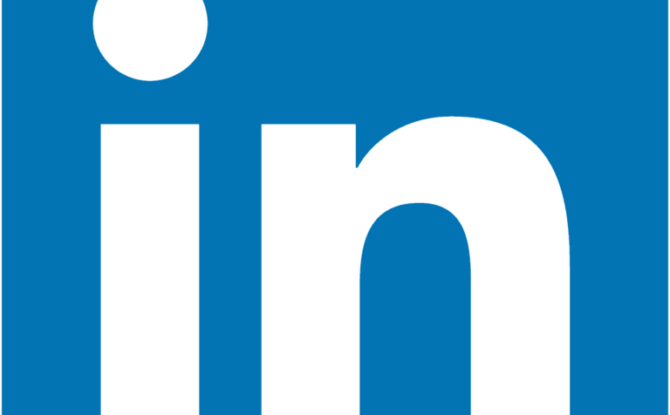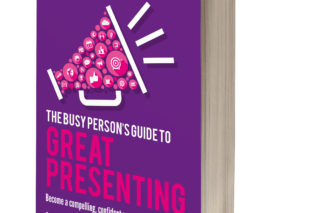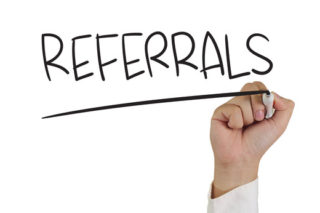
How to get your LinkedIn Profile ready for networking
Your LinkedIn profile is your shop window as a business networker. Here’s how to get it right.
Here’s something to remember about networking – if you’re not going to follow-up, then there’s no point going to a networking event in the first place.
The value of networking really lies in the follow-up. Networking is a great way to meet people and begin a conversation. The bulk of that ongoing conversation and relationship, though, happens after a networking event, not during it.
LinkedIn is one of the easiest ways to stay in touch with people, and it takes a lot of the work out of follow-up. This is one of several good reasons to spend some time on your LinkedIn profile. And the best time to get your profile right is before an event, not after it.
If you don’t have credibility online, then you don’t have credibility.
There’s another essential reason to get your profile right – one of the first things that people do after they’ve met you is to check you out online. In business, we most often go to LinkedIn (this can be different for different industries, for example people in fashion use Pinterest and Instagram a lot, but most of this article is relevant regardless of platform.) And I think it’s fair to say that if you don’t have credibility online, then you don’t have credibility at all.
It’s a bit like reading a brochure after you’ve bought something. You read the brochure because you want assurance that you made the right decision. When people meet you, and get excited about the idea of staying in touch with you, they look online to make sure that their initial impression was the right one. It’s in your own interest to make sure that your profile builds on the experience of meeting you , rather than detracts.
It works in reverse too. Often, people will check your profile before an event, especially if you’re a speaker, sponsor or you’ve made contact in advance. Your LinkedIn profile is your ‘shop window’. Make sure that you’re creating the best impression of yourself.
Spend at least as much time on your LinkedIn profile as you would on choosing your best outfit for your most important interview.
Here’s a checklist for you to cover the most important parts of your profile. all of these things can be done with a free account (as of June 2016):
-
Book some time in your diary to get to know LinkedIn. The platform is very powerful, but it’s not very intuitive and can feel a bit ‘clunky’, so spend some time getting to know it.
-
Make sure that you’ve got a photo and that it looks like you. If you want to have credibility, you can’t have a photo of yourself wrapped compromisingly around a lilo while two-thirds of your bare flesh is glowing lobster-red from the non-stop sunbathing session you engaged in immediately on arrival at Ibiza! Equally, don’t make the mistake of having one of those ‘corporate shots’ that are so photoshopped and bland that they don’t look like you anymore. The best photo is one that looks just like you as a thumbnail on a mobile phone. You want people to say ‘oh yes, that’s the person I met last night’.
-
Is your profile just an online CV? Try reading it as if you were a potential contact at a networking event. Is there any sense of your personality? Is it clear what you are really good at and really passionate about? What problems do you solve? Who have you helped? Ty re-writing your profile as if you were writing it for one specific person, you’ll find it helps to make it less formal and more interesting.
-
Headline/Job Title. A lot of people don’t realise that you don’t have to stick to the forms that LinkedIn gives you. For example, my job title is ‘Director of a Limited Company’, but that’s not interesting to anyone. So I’ve written the headline ‘Public speaking to help you inspire, influence and communicate better’ it helps to give an immediate sense of what I do.
-
Summary. If you want people to be able to contact you easily, put your contact details in your summary. That way, anyone can contact you, even if they’re not in your network.
-
Your network reflects you and your professional competence. If you’re connected mainly to FInance Directors in technology, that tells me one thing about you. If you’re connected to mainly to junior managers in accounting, that tells me something else. Consider whether your network reflects who you really are.
-
Experience: Be as specific here as possible. Don’t just put job titles or industry jargon. How did you contribute value in your past roles? Again, think of writing this part for one specific person.
-
Projects, awards, and recommendations: Obviously, get as many of these posted as you can. It’s worth taking some time to get this right. Where appropriate ask clients, colleagues, and partners for recommendations.
-
Long-term: Post occasional updates, statuses, and long-form posts. Make sure that these are relevant and interesting to your network, but most of all useful to them. Share content that you’ve found useful. There’s no ‘correct’ frequency for this, I think daily is annoying (unless your content is amazing) and less than once a month means people can forget you.
More insights and tips
The Busy Person's Guide To Great Presenting
Your LinkedIn profile is your shop window as a business networker. Here’s how to get it right. Here’s something to […]
Read More ›How to stop being boring
Your LinkedIn profile is your shop window as a business networker. Here’s how to get it right. Here’s something to […]
Read More ›Your presentations are costing you money
Your LinkedIn profile is your shop window as a business networker. Here’s how to get it right. Here’s something to […]
Read More ›Set sales fees in threes
Your LinkedIn profile is your shop window as a business networker. Here’s how to get it right. Here’s something to […]
Read More ›How to build your unique brand
Your LinkedIn profile is your shop window as a business networker. Here’s how to get it right. Here’s something to […]
Read More ›Why I don't take sales referral fees and neither (probably) should you.
Your LinkedIn profile is your shop window as a business networker. Here’s how to get it right. Here’s something to […]
Read More ›






